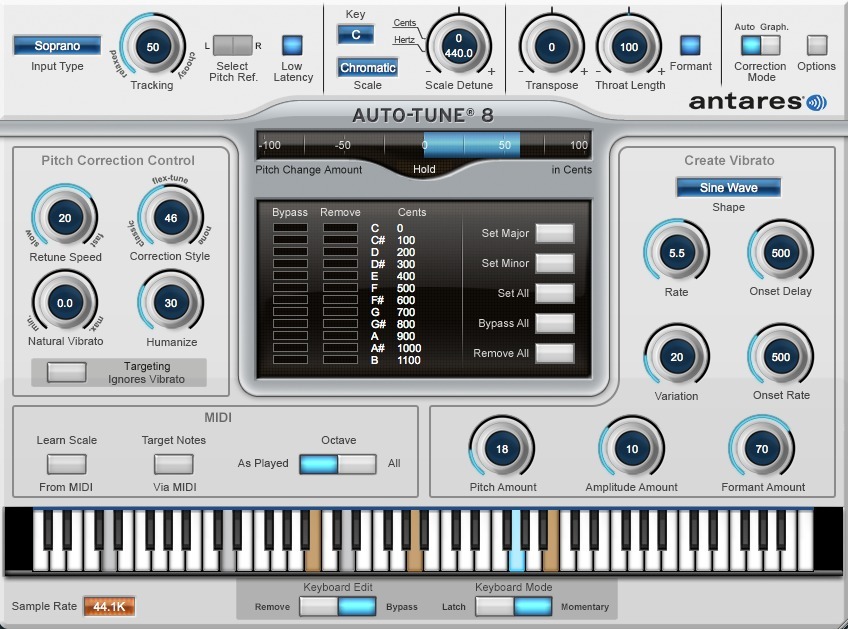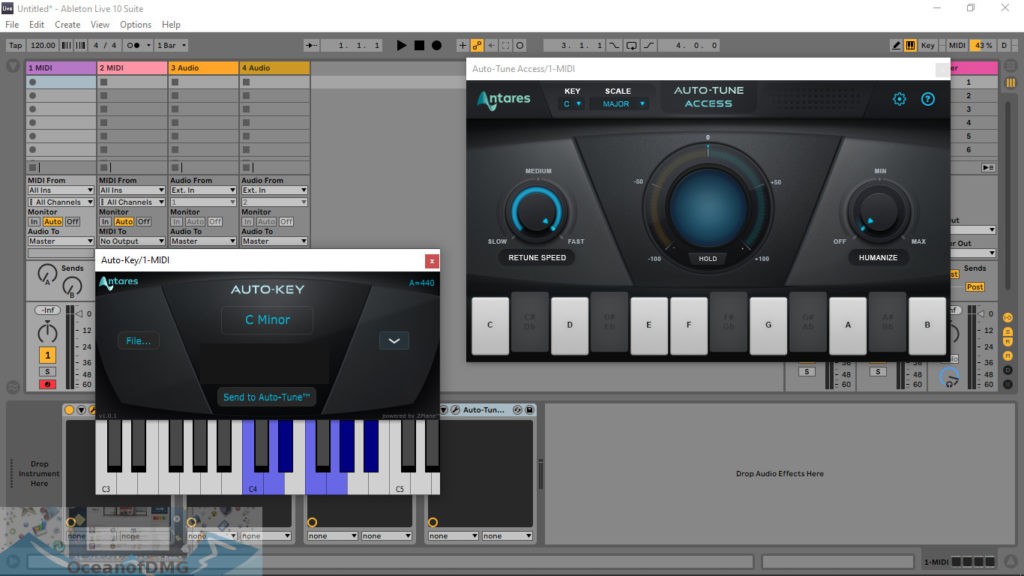Auto Tune Pro Ableton Live 9
Auto-Tune modifies and manipulates the pitch of a vocal track, and is also known for its use in the most popular hip-hop music. While this effect can create a high-pitched, robotic voice, it can also regulate the voices that sing in a more traditional way and make the tone perfect. If you want to use Auto-Tune to edit the sound of a track, you can do it very easily. /dead-island-game-of-the-year-edition-steam-serial-key-pc.html. Some audio editing programs, such as Ableton Live, have their own Auto-Tune, while others require a plug-in, which can be purchased and downloaded online. /download-the-kodi-bae-repo.html.
Here's some instructions to show you how to use VST plugins in Ableton Live: Ableton Live. Setup your VST Plug-ins Directory. Aug 02, 2016 My main message was and is that you definitely can have side-chained third party plug-ins in Ableton Live. No need crying about VST3 support just for that.

in order to push the effect into overdrive you have to purposefully have a bad performance to a certain degree, which is why it works so naturally well for rap artists in terms of singing to the correct pitch.
- Ableton Forums ↳ Music and Audio Production ↳ Push discussion ↳ Users' Help Exchange - closed ↳ Feature Wishlist ↳ Tips & Tricks ↳ Link your Music ↳ Local ↳ For Sale / Wanted ↳ The Lounge; Beta ↳ Live 9.0.x beta ↳ Live 8.4.x Beta ↳ Announcements ↳ Live 8 Beta - done.
- Ableton Live - 9.1.8 or later (AU) Studio One - 2.0.4 or later (AU and VST3) Audition - CC (VST3) Exporting audio does not work correctly in Audition when using Auto-Tune 8 in Graphic Mode. We recommend using the VST3 instead. MIDI features are not available in Adobe Audition; Possibly Compatible. Reaper - 4.77 or later (AU) Digital Performer.
- Autotune For Ableton 9 Team R2R 05 Jan 2020 101.5MB Auto-Tune Pro is the most complete and advanced edition of Auto-Tune.
- Autotune for Ableton Live. We’ve modded Cycling 74 Autotuna which is included in Max 7 Pitch and Time Machine pack. Now you can easily select which scale you want to pitch correct.
- Auto-Tune Pro also includes Flex-Tune and Humanize for more transparent and natural tuning, as well as a low-latency mode so you can work in real time without distracting the delay. It also has a time correction function for non-destructive time editing, as well as formant correction, Vibrato controls and neck length modeling.
- Auto-tune Pro Anthares 9.1 64-bit Windows 7, 8 and 10 Instructions: Attached Direct Download (242MB).
There are three levels of autotune
- Purposefully too much – like Cher, T-Pain, and Lil Wayne
- Too much needed – modern Pop and Country music
- The perfect amount – every other genre that you don’t notice it in
The only difference between the second and third stage is how good of a vocalist the artist is. Most pop artists are selected based on their overall marketability (looks, ability to perform, above-average vocal talent) as opposed to being chosen based on a supreme skill in singing.
Auto Tune Pro Ableton Live 9.7
I have to assume you know how to use your digital audio workstation software and how to add a plugin to a track in the multitrack. What I can’t assume is which plugin you’ll be using. In this case I’ll be showing you the workflow in Antares Autotune in Ableton Live.
Auto Mode
Auto Mode is the default mode when opening Auto-Tune. It is designed to automatically analyze audio as it passes through, and tune up or down to the nearest note everything that passes through. With that being said, there are some very important things to pay attention to, as they will help you get much better results. Paying attention to a few of these settings following, you can minimize Auto-Tune attempting to tune things that should not be, such as vibrato and notes that are intentionally slurred from one note to another.
Auto Tune Pro Ableton Live 9.2
Input Type
Input Type: This basic setting help Auto-Tune focus on specific frequency ranges and types based upon the type of content you are trying to tune. Always start here!
- Soprano -For high or female voices
- Alto/Tenor -For normal voices
- Low Male -For Barry White
- Instrument -For violins, violas, and other types of monophonic instruments
- Bass Inst -For lower pitched instruments, and yes, it is quite common to tune a bass guitar.
Scale
Scale: Setting the scale to the actual key of your song will most certainly help minimize errors in automatically tuning. Chromatic is the default scale, and probably most popular, but setting the proper key of your song will narrow down the choices of tuning from eleven notes down to the seven within a given key. For example, you have a song in the key of “C”, which has no sharps or flats. A singer sings a little bit sharp on a trying to sing a “C”. If the note sang is closer to “C#”, Auto-Tune will try to tune the note up to “C#”, resulting in an improperly tuned note. When setting the scale to C Major in this same scenario, the singer would have to sing past “C#” for it to create and error and try to correct to a “D”. This is another great starting point for Auto Mode usage. As you can see from the picture to the right, there are many other scales to choose from, and yes, Auto-Tune is used world wide, and there are many other scales available to those around the world using alternate tuning and scales.
Retune Speed
Retune Speed: This is one of the most important settings to pay attention to, as it sets how fast Auto-Tune will tune a note, similar to a glide or fade time from non-tuned to fully tuned processing. Setting a very fast time will remove any variations in pitch, but can yield some very unnatural results. But then again, this is a big part of creating the T-Pain/Cher effect. If this is what you are looking for, absolutely start here with a very fast time!
Humanize
Humanize: This allows sustained notes to have a slower Retune speed than the shorter duration notes. Typically you would start a setting of 0 while setting the Retune speed, making sure all notes that need tuning are being tuned, then adjusting the Humanize will help with sustained notes from not sounding overly tuned, while still being fast enough to tune shorter duration notes.
Natural Vibrato
Natural Vibrato: This is independent of your pitch settings and is used solely to tame natural vibrato of a performance. Leaving it at it’s default setting of 0, will not affect the original vibrato, but adjusting will minimize the amount of vibrato allowed. Once again, this is independent of pitch controls.
Targeting Ignores Vibrato

Targeting Ignores Vibrato: Turning this on can help with what Auto tuning tries to tune and what it ignores. If you have a track with a lot of vibrato, try turning this on and see if it helps. This is something that would typically be used with a lead type of vocal, allowing the natural vibrato to be ignored. Backing vocals typically shouldn’t have as much vibrato, therefore, minimizing vibrato is preferred.
Target Notes Via MIDI
Target Notes Via MIDI: This is quite fun to play with, along with fast Retune speeds. When engaging, Auto-Tune does nothing until a MIDI note is present from a keyboard or MIDI track, then it tunes to the MIDI notes present. You can then play in a melody from a MIDI device, and the track will be tuned to what you play.
Track Pitch in Autotune
The first thing we need to do is capture, or “Track Pitch”, our audio track into Auto-Tune so that it can analyze it, draw a graphic representation of the audio pitches, and respond appropriately. This allows Auto-Tune the time to not only respond quickly, but also to ramp in tuning before a note needs to be tuned, which is impossible in Auto Mode, as it is only running in real-time. So to get started:
Auto Tune Pro Ableton Live 9.1
- Click on the “Track Pitch” button: It will turn “Red” when enabled to track pitch.
- Play the track: Play your song from beginning to end, or section by section. As long as all the information that needs to be tuned is tracked in, you can then proceed.
- Turn off the “Track Pitch” button: Self-explanatory, but necessary to start tuning.